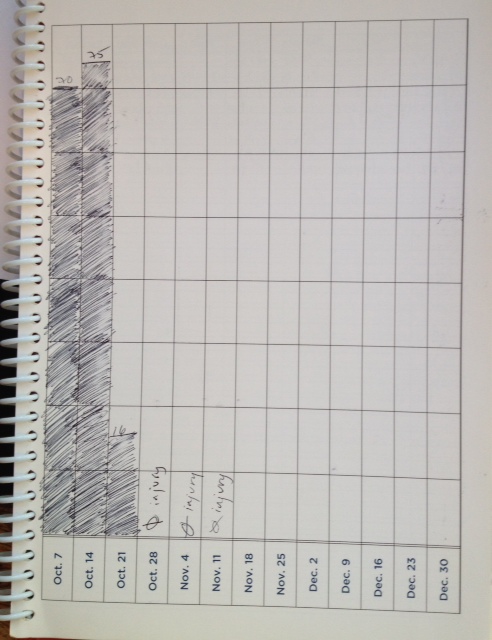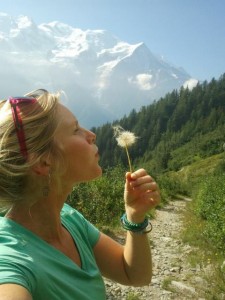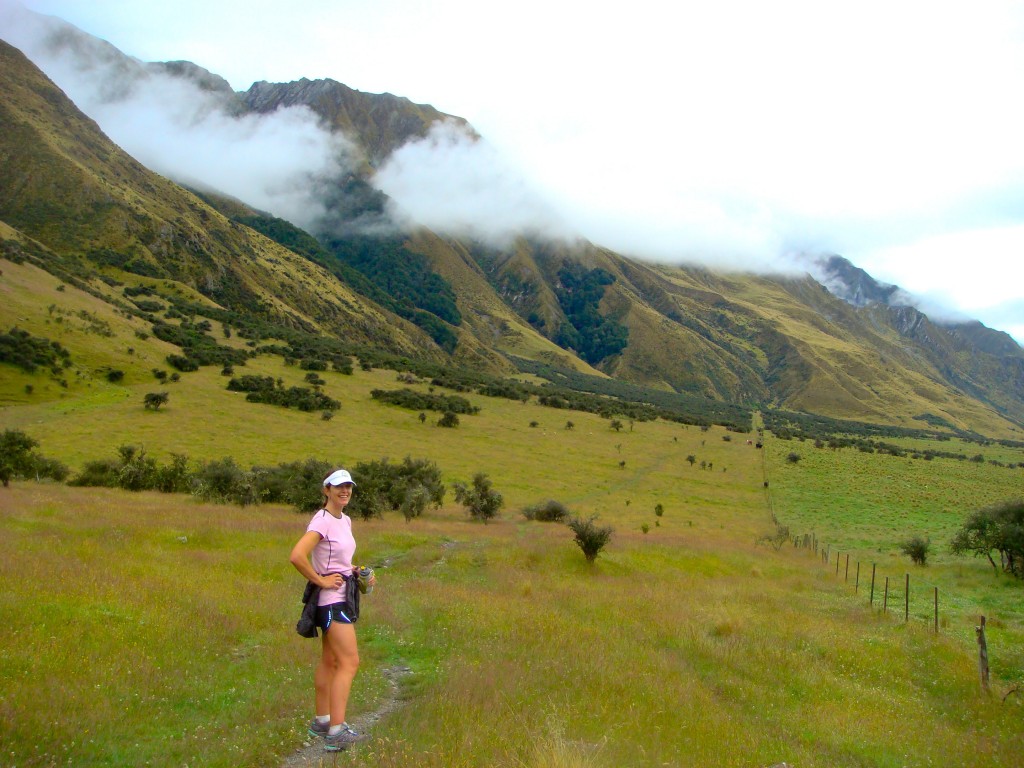I sat in the garage yesterday on our 10-year-old recumbent bike next to the ping-pong table, pedaling away while wondering how I would extend the ten minutes to a minimum of thirty. Looking around, confined to this indoor space, I dwelt on how the garage needs work—I need to clean the dead bugs on the counter, patch the wood rot on the windowsill, fix the cable hookup for the non-functioning TV. Closing my eyes, I pictured trees.
This level of exercise makes me break a sweat but doesn’t much boost my mood. I am grateful for this workout space, and even more grateful for the gym membership that enables me to take spin classes and jump in a pool, but Lord do I miss running trails and finishing strong in races.
I got MRI results earlier in the week that finally gave a clear diagnosis and revealed what an earlier X-ray didn’t: “There is a stress fracture of the third metatarsal, and this is associated with intense bone edema and inflammation…” What’s more, the chronic problem around the ball of foot and big toe still “looks angry,” as my doctor said. I have sesamoiditis involving a torn ligament, and turf toe from a sprain in another ligament around my big toe. (But hey, look on the bright side! My lower back pain has disappeared.)
In other words, I managed to seriously mess up my foot by running through pain for months, and I need to let it heal once and for all. No more stubborn walks around the neighborhood until I limp, no more taking a few jogging steps every few days to test it out (and feeling shooting pain), now that I see in black and white the words fractured and torn.
When I stopped running a month ago, my daily life lost its rhythm, my ego lost its boost, my mind lost its endorphins. I cross train, but the exercise lacks structure and inspiration. I feel moody, heavy and constipated, prone to snap at my family and to go to bed overly stuffed from second helpings and wine. I’m convinced I look as dumpy as I feel.
This, folks, is the mindset of an injured runner. We know to self-coach ourselves to look on the bright side, to have patience, to count our blessings and to keep things in perspective—and we try, really we do. But it’s easier said than done.
I was in this frame of mind on the recumbent bike when I watched the latest six-minute installment from Salomon Trail Running TV on YouTube on my iPhone. This episode is about Anna Frost, the 32-year-old Salomon-sponsored champion New Zealand runner who frequently posts selfies of her blond, fair profile and cheeky grin on her Facebook page. I’ve followed her for the last couple of years, ever since she won the North Face Endurance Challenge 50-Mile Championship two years in a row. She is trail running’s girl-next-door who runs in races around the world and makes wholesome seem sexy. She is as naturally beautiful, photogenic and friendly as her country.
If you’re feeling injured, dumpy and grumpy, then watching a video of someone like Anna Frost might make you feel worse. Or it could be just the thing to transport you to a better place. I clicked through to watch it reluctantly, aware the episode could stir as much jealousy and cynicism as escapism and inspiration.
I’m in the midst of working on a feature article that looks at the myriad ways social media and new technology have fundamentally changed the sport—both the way that individuals train and compete, and the sport’s community as a whole—so I watched the first part of the video with a critical eye, contemplating how, in just a handful of years, new media channels and sponsors have given rise to quasi-celebrities in the sport who subtly push products and who attract more people to run trails and ultra distances. Anna is a poster girl for this trend.
But I’ve been vaguely aware that Anna suffered a lackluster, injury-plagued season following a championship in 2012 that cemented her place among the top mountain runners in the world. She had stress fractures and pain radiating in her lower back. How would her sponsor spin her disappointing year?
Salomon’s formula for brilliant, sentimental filmmaking captures the story of Anna returning to her home town, her golden profile looking out an airplane window juxtaposed with the blue and emerald tones of New Zealand’s seaside and mountaintops below. She talks about returning home and putting down roots, and about sacrifices she made to leave home and race on the global circuit. Family snapshots of Anna as a girl stir nostalgia and suggest lost innocence.
Watching the breathtaking images of the mountains and hearing the folksy music of the soundtrack, I started to feel intensely nostalgic for our family’s magical, meandering journey around New Zealand three-and-a-half years ago—a time when our kids were still kids and the four of us were together all day, every day. A time when we felt free, and I felt younger and healthier.
Three minutes in, Anna says, “The end of last year was really bad,” and her face crumples slightly. She’s crying.
I lost my cool detachment and could no longer think academically about Salomon’s marketing techniques. Anna had me hanging onto every word that followed.
She describes how she pushed herself to run—she felt she needed it—but, “I wasn’t doing it because it was something I love anymore.”
“I couldn’t actually see that I was that bad, and running had become … the thing I had created for myself, so running was who I was. And that’s not right. It took until I got to the rock bottom, where my injury was so bad and my head was so far away from who I was, until I could actually open my eyes and say, ‘Wow you’ve gotten yourself really deep there,’ and it’s been a really, really hard journey back out of there, and made me open my eyes and say, ‘Running really is just running.’”
“It took a long time before I could put on a pair of shoes again to go and do what I love, not just go and run.”
Five minutes into this video, tears began running down my cheeks. I cried while pedaling on that stupid old bike that goes nowhere because I want another carefree run in my hometown; I want a healthy relationship with this hobby that is such a major part of my life. I want to feel like I’m loving it, not that I’m forcing it. I want to feel well and fit and optimistic, not full of anxiety that I’m breaking down and that my best days are behind me.
“I’m sure it will come back—the drive to race—and if it doesn’t, I’ve got a lot of adventures that I want to do, and there’s such a huge amount of life and the world to travel—to adventure and to explore—that I don’t need the racing to do that.”
God damn you and thank you, Anna Frost. You made me cry because you put into words something similar to what I’ve been going through and made me feel less crazy and less alone in this low point.
“If you get disappointed by running, then it’s not running that you’re actually disappointed in; it’s yourself. You have to love who are, because that’s what you’ve got, that’s all you’ve got, and you have to be grateful for that as well. That’s what I’m learning.”
You don’t know me, but I feel like I know you, and I’m grateful for that connection—grateful for your message and your images. I hope you are well enough to run The North Face Endurance Challenge Championship in San Francisco in two weeks, because I’d like to see you come back to win again.
Watch it:





“You have to love what you do”. Great recap, I may need to see the movie. This is exactly how I feel, can’t run, but kept pushing until my body crumbled and refused to run. Just like that, one day I woke up – and can’t run, and I am not even injured. It is scary when you realize running had become your identity – and your work. I want to love running as I always did. I still do, in my dreams – but I need a huge step back, much bigger than those I had before. I want to do it because I love to do it, free, and without a race as a motivator. And you know what else? Apparently, one looses quite a number of “friends” while going through this process, friends you thought you were able to connect with via so many things even if initially met them through running. Scary thoughts, but may be that’s a good thing too, allows you to see the real. To grow. Best of luck. Keep writing.
Thanks, Sarah. This article makes me feel better. I hope you recover quickly, but take your time I was afraid after reading your FB posts that your injury could be serious. As long as the treatment plan works, you’re in great shape. My last race (while in shape) was the 2011 Tahoe Relay. I’m considering surgery on my foot as a last resort to resuming a running regimen. In the meantime I’ve learned to find other productive ways to fill my days.
I always like reading your blog. Maybe we’ll see each other on the road again.
Due to various injuries a few years ago, I recognized that I loved the exhilaration of running and needed to protect that feeling. When I cannot run it messes with my head and ruins my mental and physical health. So I changed my focus to minimizing injuries (versus trying to improve or stretching my goals).
I appreciate the complete honesty in your writing. It makes it so easy to recognize my own feelings and understand better the impacts and consequences of our shared passion.
Glad you’ve identified the problem, Sarah. That makes the whole process easier when you know the enemy and understand what it will take to beat it. Best wishes for a rapid and complete recovery.
Thanks so much for this post . . . I have been dealing with running injuries for the last thirty years . . . nothing major, but enough to keep me from running for months/years at a time. It does mess with your head/heart/identity as a runner (whatever that is 🙂 )
Nine years ago, I discovered hiking as a pretty good substitute (with camera and trail journal to help me notice the beauty around me).
Four years ago, I discovered that hiking/trail running without shoes is yet another way to connect with “nature” (which includes my own body!).
Now I’m back to about an hour of running before my old nemesis patella pain kicks in . . . so I try to be thankful for that hour, and keep seeing a physical therapist.
I want to be active till I’m 108 years old (and I’m only half-way there), so losing my shoes has really given me hope I’ll make it another fifty years on the trails.
Best of luck as you recover . . . keep writing . . . you have things to say us other runners need to hear.
So sorry to hear about your injury Sarah. I’ve had the same thing since surgery over a year ago when the words arthritis and degenerative dealt me a reality slap. Really touching piece for anyone who has known the same feelings of loss in what you love and what defines you. Hope you are back soon but don’t rush it. 😉
I’m sure any runner who has ever been injured recognises the feelings you speak of in this post. I wish you a speedy recovery and hope you can find some enjoyment in alternative means of training…..a task I always find nearly impossible! Going to share your page on some Scottish running FB pages….Very best wishes x